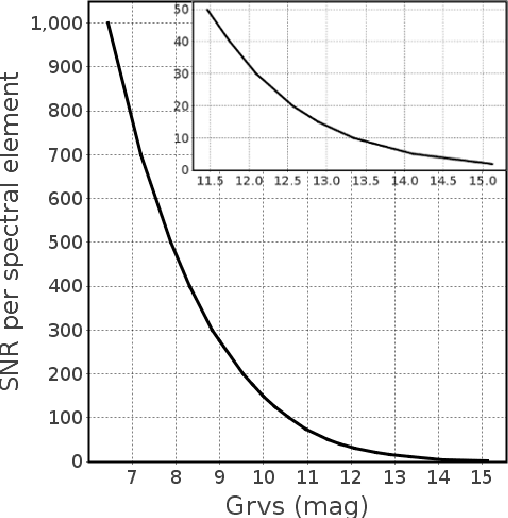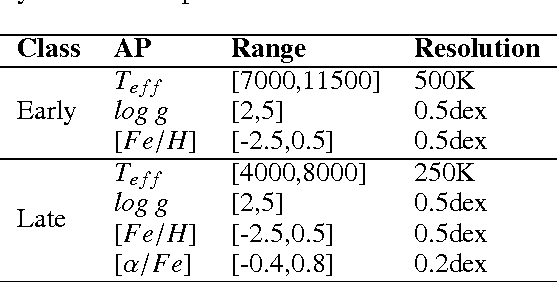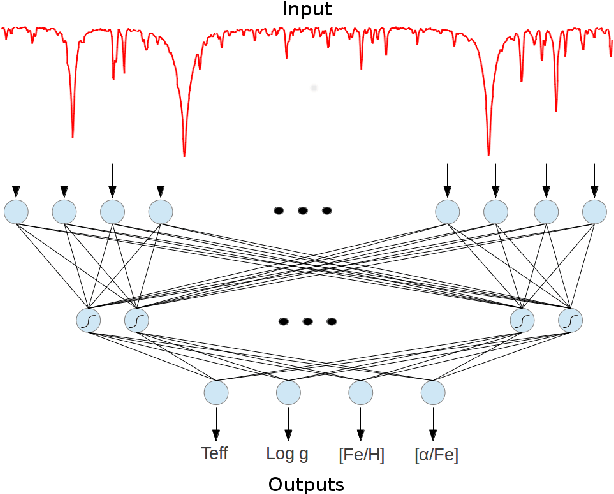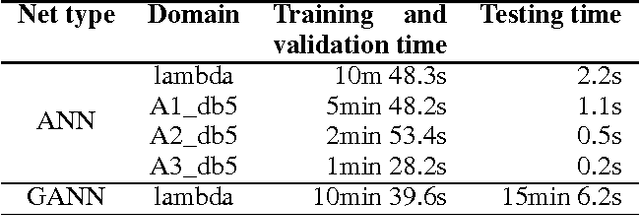C. Allende Prieto
High-precision interpolation of stellar atmospheres with a deep neural network using a 1D convolutional auto encoder for feature extraction
Jun 12, 2023Abstract:Given the widespread availability of grids of models for stellar atmospheres, it is necessary to recover intermediate atmospheric models by means of accurate techniques that go beyond simple linear interpolation and capture the intricacies of the data. Our goal is to establish a reliable, precise, lightweight, and fast method for recovering stellar model atmospheres, that is to say the stratification of mass column, temperature, gas pressure, and electronic density with optical depth given any combination of the defining atmospheric specific parameters: metallicity, effective temperature, and surface gravity, as well as the abundances of other key chemical elements. We employed a fully connected deep neural network which in turn uses a 1D convolutional auto-encoder to extract the nonlinearities of a grid using the ATLAS9 and MARCS model atmospheres. This new method we call iNNterpol effectively takes into account the nonlinearities in the relationships of the data as opposed to traditional machine-learning methods, such as the light gradient boosting method (LightGBM), that are repeatedly used for their speed in well-known competitions with reduced datasets. We show a higher precision with a convolutional auto-encoder than using principal component analysis as a feature extractor.We believe it constitutes a useful tool for generating fast and precise stellar model atmospheres, mitigating convergence issues, as well as a framework for future developments. The code and data for both training and direct interpolation are available online at https://github.com/cwestend/iNNterpol for full reproducibility and to serve as a practical starting point for other continuous 1D data in the field and elsewhere.
On the estimation of stellar parameters with uncertainty prediction from Generative Artificial Neural Networks: application to Gaia RVS simulated spectra
Jul 19, 2016



Abstract:Aims. We present an innovative artificial neural network (ANN) architecture, called Generative ANN (GANN), that computes the forward model, that is it learns the function that relates the unknown outputs (stellar atmospheric parameters, in this case) to the given inputs (spectra). Such a model can be integrated in a Bayesian framework to estimate the posterior distribution of the outputs. Methods. The architecture of the GANN follows the same scheme as a normal ANN, but with the inputs and outputs inverted. We train the network with the set of atmospheric parameters (Teff, logg, [Fe/H] and [alpha/Fe]), obtaining the stellar spectra for such inputs. The residuals between the spectra in the grid and the estimated spectra are minimized using a validation dataset to keep solutions as general as possible. Results. The performance of both conventional ANNs and GANNs to estimate the stellar parameters as a function of the star brightness is presented and compared for different Galactic populations. GANNs provide significantly improved parameterizations for early and intermediate spectral types with rich and intermediate metallicities. The behaviour of both algorithms is very similar for our sample of late-type stars, obtaining residuals in the derivation of [Fe/H] and [alpha/Fe] below 0.1dex for stars with Gaia magnitude Grvs<12, which accounts for a number in the order of four million stars to be observed by the Radial Velocity Spectrograph of the Gaia satellite. Conclusions. Uncertainty estimation of computed astrophysical parameters is crucial for the validation of the parameterization itself and for the subsequent exploitation by the astronomical community. GANNs produce not only the parameters for a given spectrum, but a goodness-of-fit between the observed spectrum and the predicted one for a given set of parameters. Moreover, they allow us to obtain the full posterior distribution...
 Add to Chrome
Add to Chrome Add to Firefox
Add to Firefox Add to Edge
Add to Edge